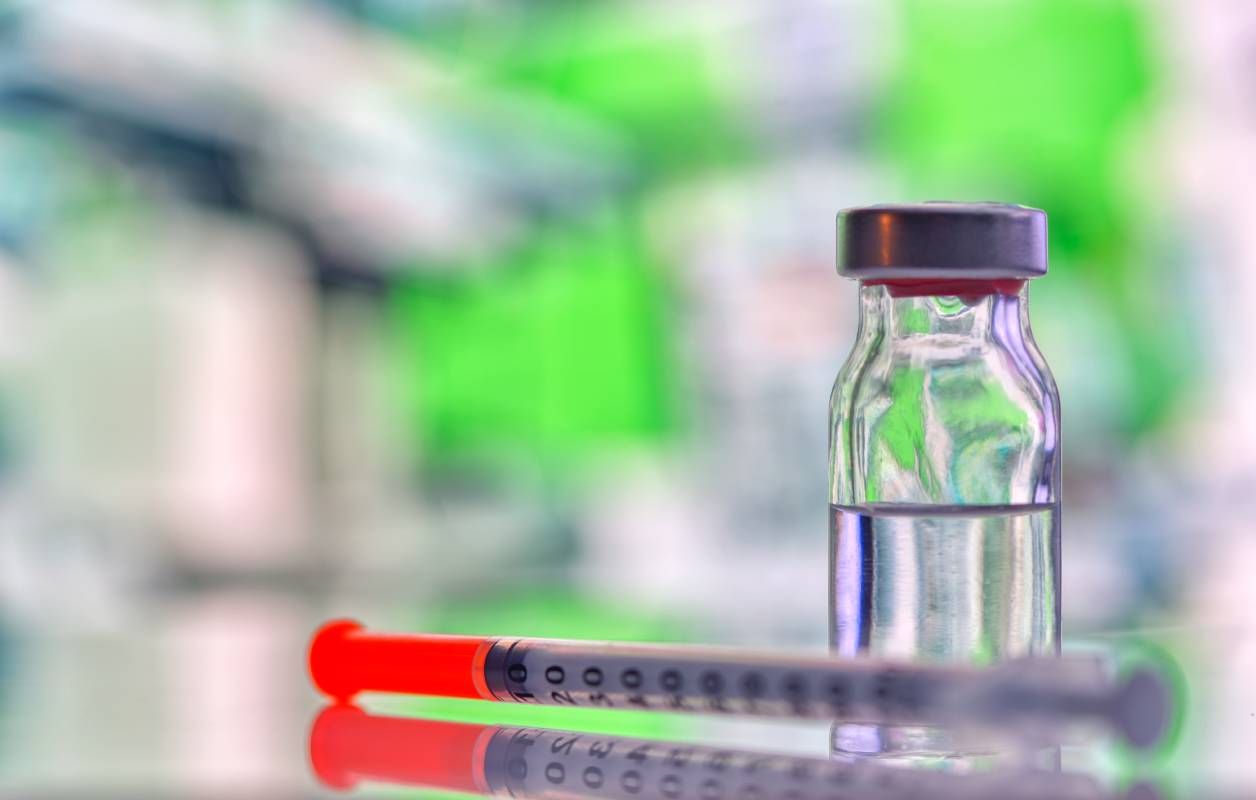Naltrexone is a medication typically used for treating alcohol use disorder and opioid use disorder. It functions as an opioid antagonist, blocking the receptors that opioids such as heroin, morphine, and codeine bind to.1 By blocking these receptors, naltrexone helps decrease the dependency that opioid and alcohol users have for these substances.2 In addition to its ability to treat substance use disorders, naltrexone is used for analgesia.
Low-dose naltrexone (LDN) is a treatment for conditions such as Crohn’s disease and multiple sclerosis.3 A typical dose of naltrexone for alcohol and opioid use disorder is 50-100 mg daily, while LDN treatments consist of a daily dose of approximately 5 mg.4 At this lower dose, naltrexone reduces inflammation and provides analgesia.
LDN may be effective in reducing chronic pain caused by certain conditions, such as fibromyalgia. Fibromyalgia causes pain and tenderness throughout the body, in addition to irregularities in sleep and mood. Its cause is unknown, though people with the disorder generally have a lower threshold for pain tolerance, and some have altered neural signaling in the pathways related to the transmission of pain.5 In two separate trials, LDN was shown to reduce pain associated with fibromyalgia during and after treatment, with half the participants reporting that they felt “much improved” or “very improved” due to LDN treatment.6
LDN’s mechanism of action in reducing pain seems to be related to its anti-inflammatory behavior. In addition to inhibiting certain opioid receptors, naltrexone inhibits non-opioid receptors, such as Toll-like receptor 4, that are found on microglia, a type of cell in the central nervous system that function as macrophages.7 Upon excitation, microglia typically produce inflammatory factors, potentially leading to symptoms such as pain sensitivity, sleep and mood disorders, and fatigue.3 Naltrexone suppresses the activation of microglia, thus reducing the production of factors like reactive oxygen species and alleviating symptoms.
While this purported mechanism is the most commonly accepted explanation, other mechanisms for LDN’s analgesic behavior have been proposed. Another hypothesis centers on a phenomenon known as “opioid rebound.” According to this theory, when the body receives a small and transient dose of opioids, it responds by upregulating the production of both opioids and their receptors, which promotes analgesia.8
It may seem contradictory that naltrexone, which blocks opioids from binding to opioid receptors at high concentrations, could promote their activity at lower concentrations. This paradoxical behavior, however, does have precedent. In 1987, Kayser et al. reported that mice treated with morphine at doses of 30-100 micrograms (ug) per kilogram (kg) experienced analgesia, but at doses of 10 ug/kg and lower, mice developed hyperalgesia – increased sensitivity to pain.9 Like naltrexone, morphine causes the opposite effect at one-tenth its typical dose.
LDN, like any treatment, has its disadvantages and risks. Currently, 4.5-5 mg daily is the accepted and recommended dose for naltrexone for analgesia, though this might not be appropriate for patients with rates of metabolism, body mass indices, and opioid receptor sensitivity that differ from the norm. More research into the range of LDN doses that are effective is needed. Additionally, further studies investigating the long-term safety of LDN should be conducted. Medical practitioners may assume that LDN does not pose any long-term risks because of the low dosage used for analgesia, but this assumption should be confirmed through rigorous research.
References
1. Naltrexone. https://www.samhsa.gov/medication-assisted-treatment/medications-counseling-related-conditions/naltrexone.
2. Singh, D. & Saadabadi, A. Naltrexone. in StatPearls (StatPearls Publishing, 2022).
3. Younger, J., Parkitny, L. & McLain, D. The use of low-dose naltrexone (LDN) as a novel anti-inflammatory treatment for chronic pain. Clin. Rheumatol. 33, 451–459 (2014), DOI: 10.1007/s10067-014-2517-2
4. Gold, M. S. et al. Naltrexone, opiate addiction, and endorphins. Med. Res. Rev. 2, 211–246 (1982), DOI: 10.1002/med.2610020302
5. Nancy Garrick, D. D. Fibromyalgia. National Institute of Arthritis and Musculoskeletal and Skin Diseases. https://www.niams.nih.gov/health-topics/fibromyalgia (2017).
6. Younger, J., Noor, N., McCue, R. & Mackey, S. Low-dose naltrexone for the treatment of fibromyalgia: findings of a small, randomized, double-blind, placebo-controlled, counterbalanced, crossover trial assessing daily pain levels. Arthritis Rheum. 65, 529–538 (2013), DOI: 10.1002/art.37734
7. Watkins, L. R. et al. Norman Cousins Lecture. Glia as the ‘bad guys’: implications for improving clinical pain control and the clinical utility of opioids. Brain. Behav. Immun. 21, 131–146 (2007), DOI: 10.1016/j.bbi.2006.10.011
8. Brown, N. & Panksepp, J. Low-dose naltrexone for disease prevention and quality of life. Med. Hypotheses 72, 333–337 (2009), DOI: 10.1016/j.mehy.2008.06.048
9. Kayser, V., Besson, J. M. & Guilbaud, G. Paradoxical hyperalgesic effect of exceedingly low doses of systemic morphine in an animal model of persistent pain (Freund’s adjuvant-induced arthritic rats). Brain Res. 414, 155–157 (1987), DOI: 10.1016/0006-8993(87)91338-2

